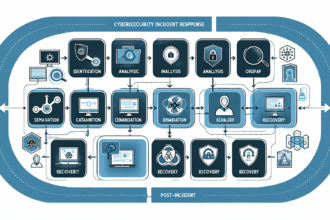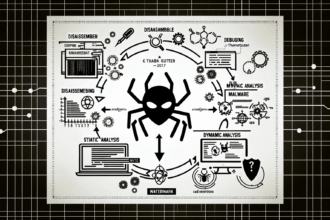In today’s hyperconnected world, cryptocurrency exchanges are prime targets for cybercriminals. Users worry about stolen funds, data breaches, and service disruptions. By exploring the most prevalent types of cybersecurity threats, we can shed light on effective defenses—and help you navigate these risks with confidence.
Phishing: The Art of the Deceptive Hook
Phishing remains the most common entry point for attackers. Over 80% of data breaches begin with phishing emails posing as legitimate services or support teams (Verizon DBIR, 2023). Victims click on crafted links, unknowingly handing over credentials. In the crypto space, this translates into drained wallets and hijacked accounts overnight. The pain is tangible—users fear that a single misguided click will obliterate their holdings.
Malware and Ransomware: When Code Becomes a Prisoner
Malware variants, especially ransomware, encrypt files and demand hefty payments. The average ransom demand soared to $600,000 in 2023 (IBM X-Force Threat Intelligence Index, 2024). Beyond financial loss, exchanges face downtime, reputational damage, and regulatory scrutiny. These attacks exploit unpatched software and lax endpoint security. Users bristle at the idea that their machines—once safe—could be commandeered to freeze critical data.
Distributed Denial of Service (DDoS): Overwhelming the Gates
A sudden surge of traffic can incapacitate an exchange, preventing legitimate trades. In the first quarter of 2024 alone, DDoS incidents increased by 75%, with peak bandwidths exceeding 1 Tbps (NetScout, 2024). The result? Frustrated traders unable to execute time-sensitive orders, potentially missing out on market opportunities. The pain is clear: downtime equates to lost revenue and shaken trust.

Insider Threats: The Enemy Within
Not all threats come from outside. Employees with privileged access can intentionally or accidentally leak data. In a survey by the SANS Institute (2023), 60% of organizations reported at least one insider-related breach in the past year. For exchanges, a rogue administrator could manipulate wallet addresses or siphon funds. Users dread that those hired to protect them might become the very source of compromise.
Zero-Day Exploits and Supply Chain Attacks: Unseen Vulnerabilities
Zero-day vulnerabilities—flaws unknown to vendors—are ideal for stealthy intrusions. Similarly, supply chain attacks infiltrate trusted third-party software before it even reaches your system. The infamous SolarWinds breach, for example, affected thousands of organizations worldwide. In crypto, malicious libraries or APIs can inject backdoors directly into exchange infrastructure. The unease is palpable: you update software, yet the danger may already be inside.
Credential Stuffing and Brute-Force Attacks: Guessing Games Turn Deadly
Attackers automate login attempts using leaked username–password pairs. With tools that try millions of combinations per minute, many exchanges see credential stuffing attempts spike by 300% during market volatility (ENISA Threat Landscape Report, 2023). Weak or recycled passwords are an open invitation. Traders fear that reusing credentials on lesser-known platforms could lead to an irreversible compromise.
Advanced Persistent Threats (APTs): The Long-Term Infiltration
APTs represent sophisticated, multi-stage campaigns where attackers patiently carve out footholds over weeks or months. Their goals range from data exfiltration to financial siphoning. APT groups often target high-value crypto firms, exfiltrating wallet keys or tampering with transaction records. The sheer stealth of such operations leaves victims unaware until the damage is monumental. Users worry: if these “ghosts” can live undetected in networks, how can any system ever be truly safe?
Addressing User Pain Points with Real-World Data
- Fear of Instant Loss: With phishing accounting for the majority of breaches, simple security hygiene—like enabling multi-factor authentication—reduces this risk by up to 99.9% (Microsoft Security Research, 2023).
- Anxiety Over Downtime: Employing DDoS mitigation services that absorb traffic spikes can maintain uptime even under massive attack volumes.
- Distrust in Vendors: Regular third-party audits and strict change-management policies help guard against supply chain compromises.
- Concern About Insider Actions: Zero-trust frameworks, where no user is inherently trusted, significantly curb insider risks by enforcing continuous verification.
By integrating these strategies, exchanges can not only protect assets but also restore user confidence in a landscape rife with uncertainty.
Choose vigilance. Embrace layered defenses. Theguter stands at the forefront of exchange security insights, guiding you through every threat landscape.
About the Author
Dr. Alex Mercer holds a PhD in Cybersecurity and has spent over a decade researching digital asset protection. A frequent speaker at blockchain security forums, Alex combines hands-on experience with academic rigor to illuminate complex threats for both technical and non-technical audiences.






